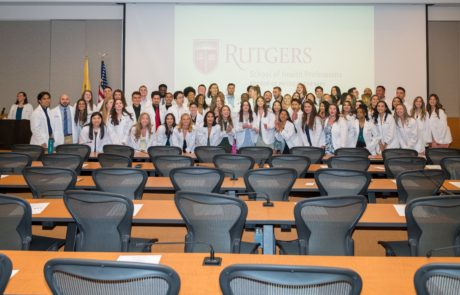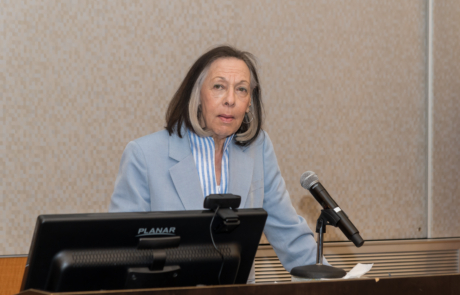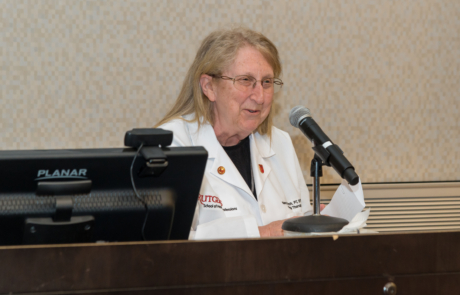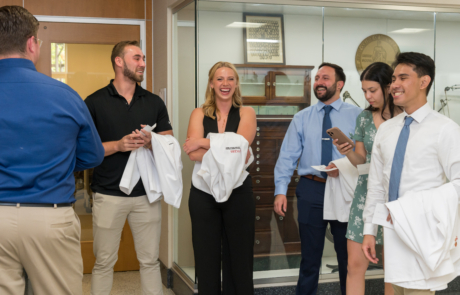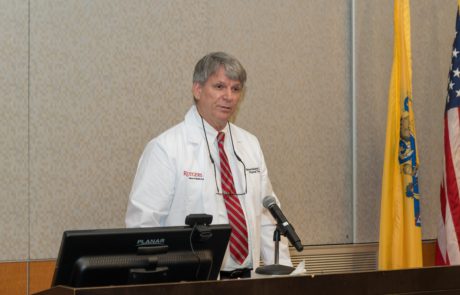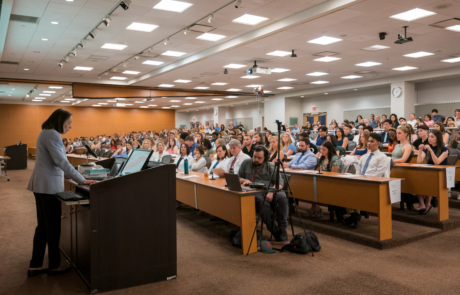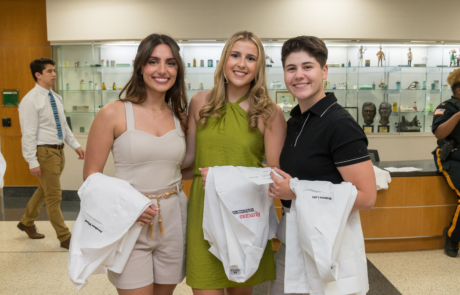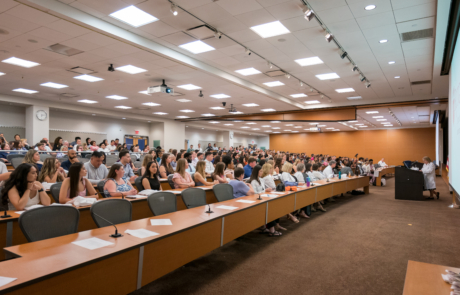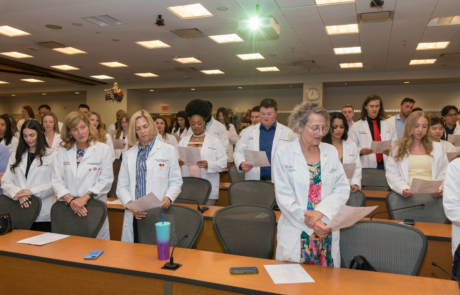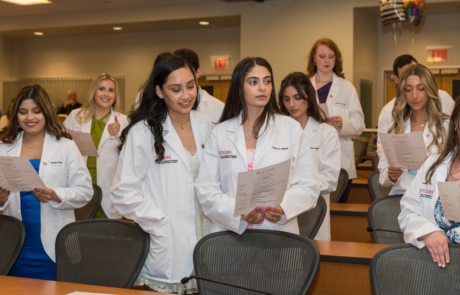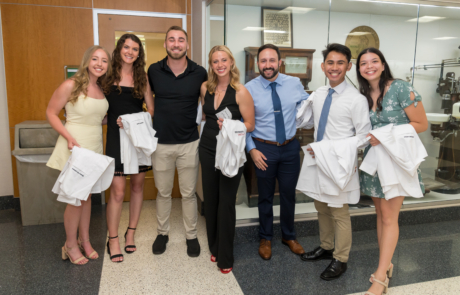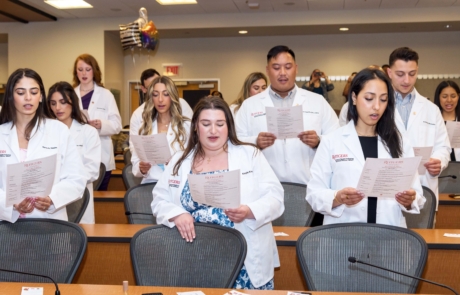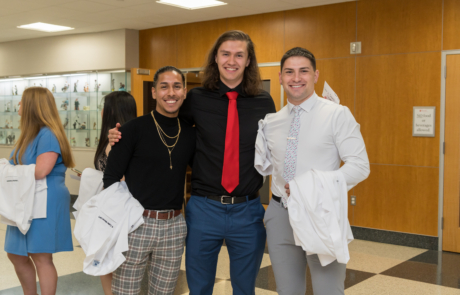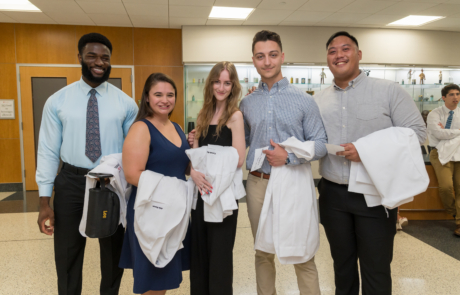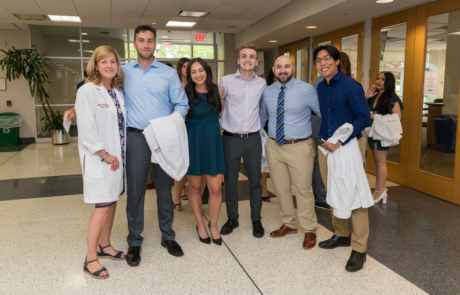White Coat Ceremony Marks New Beginning for Rutgers Physical Therapy Students
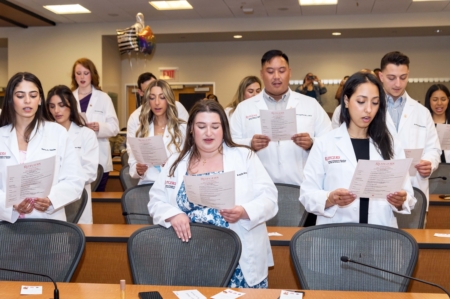 For more than 40 years, faculty at the Newark campus has prepared generations of dedicated health care professionals.
For more than 40 years, faculty at the Newark campus has prepared generations of dedicated health care professionals.
A white coat symbolizes a significant moment for aspiring physical therapists: A strenuous year of memorizing minuscule functions of the human body that is commemorated with the donning of a jacket packed with meaning for any health care professional.
The coat, decorated with the Rutgers School of Health Professions (SHP) logo, lets the world know that these students are preparing for meaningful service in a physical therapy career. On May 22 on the Rutgers Biomedical and Health Sciences (RBHS) campus in Newark, 68 members of the Class of 2025 received their coats, celebrating a milestone in their health care journey.
“The white coat is symbolic of leaving the civilian world and entering into the social contract with the patients,” said Nancy Kirsch, a professor, and SHP’s interim department chairwoman. “It is a privilege to be a physical therapist, one that has filled me with wonder for over half a century.”
Michael Majsak, SHP’s physical therapy program director, greeted students, faculty, and guests.
“With each incoming class comes the opportunity to transform and continue to grow the physical therapists of tomorrow,” he said.
The ceremony, which takes place during a student’s first year, welcomes future physical therapists into the profession as they begin their clinical rotations. It is often seen as a symbol of authority, professionalism, caring, and trust.
“The white coat ceremony started in medicine in the early ’90s. It symbolizes the commitment students have to serve others through their profession,” Majsak said.
After receiving their white coats, the students transition from the classroom to the clinical portion of the program.
Physical therapists see hundreds of thousands of patients each year with various health conditions that impact mobility. They work closely with their patients, helping them regain function and return to their normal activities, whether it is a daily jog or just dressing independently.
According to the Bureau of Labor Statistics, this class of future physical therapists also will see their jobs increase by 17 percent, or by 40,400 positions, from 2021 to 2031, much faster than the average for all occupations.
“A physical therapy career path offers variety and opportunities for advancement,” Majsak said. “You can choose to practice in several healthcare settings, and you can also develop one or more specialties throughout your career to advance your knowledge.”
Rutgers Doctor of Physical Therapy is a three-year, full-time degree program. The program is housed in SHP’s top-ranked rehabilitation and movement sciences department. Founded in 2013 as part of RBHS, the school prepares its students to think critically and act skillfully to meet expanding health care needs in local and global communities.
“You stand today on the threshold of your chosen career,” Kirsch said. “Accept the challenge to never lose sight of the importance of each patient and your ability to impact the quality of their life.”
Rutgers School of Health Professions is the largest, most comprehensive health professions school in the nation. Graduates are prepared with the knowledge, skills, and intellectual approach necessary to become progressive, innovative, and interprofessional practitioners and leaders in the ever-changing healthcare landscape. Our school will continue to be a leader in our disciplines by developing programs that anticipate and respond to the healthcare needs of the community; increasing and expanding our academic, clinical, and research partnerships around the world; and continuing our efforts in technological advancement. To learn more visit www.shp.rutgers.edu.
